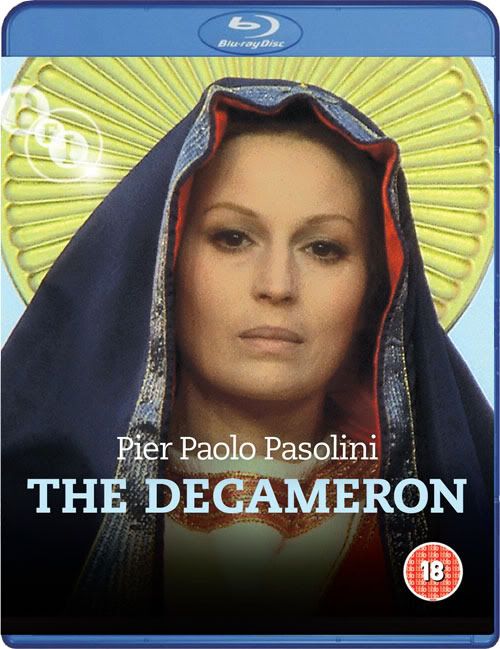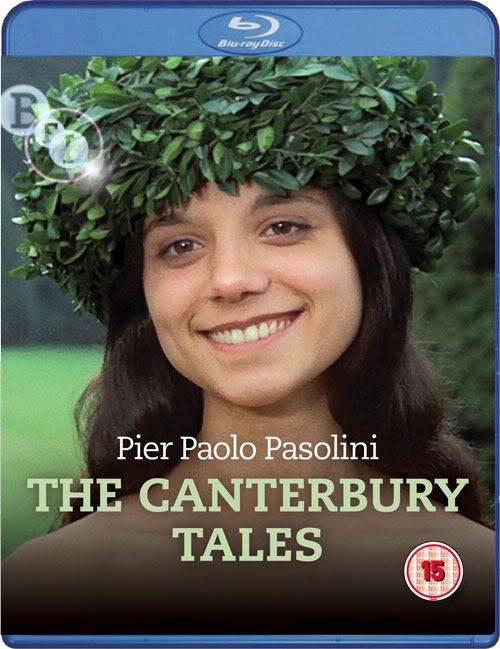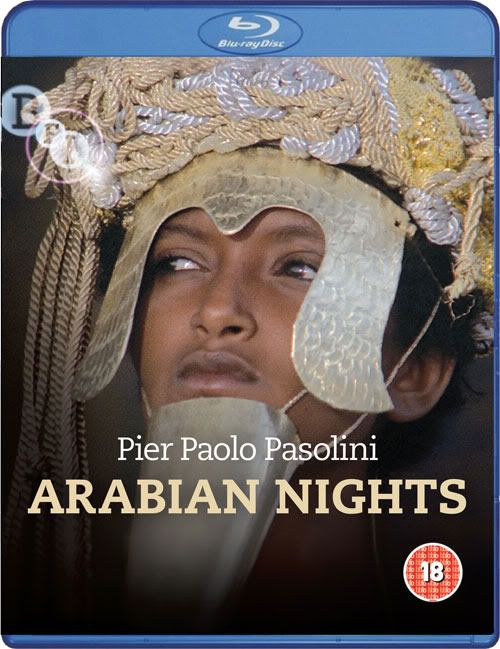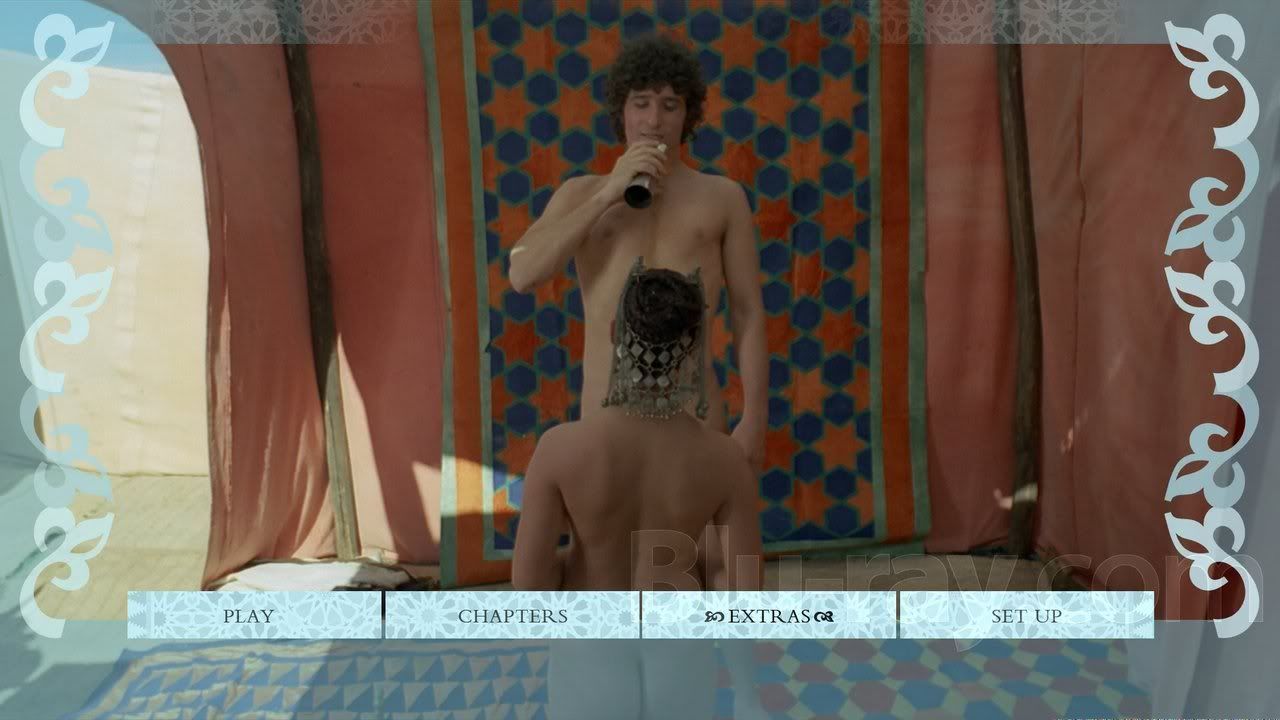Como intelectual Pasolini fue una especie de barómetro del tiempo que le tocó vivir. Intervino en las crisis y contradicciones de su tiempo por medio de sus cotidianos artículos de prensa, pero también, en otra perspectiva, a través de su cine, su poesía, sus novelas y su teatro.
A saber por medio de qué magia su cine, que se originaba como respuesta a coyunturas socioculturales muy concretas, décadas después de realizado no muestra en absoluto los signos y las marcas de su momento de origen sino el perfil inequívoco de la intemporalidad. Cosa difícil de lograr, porque no hay arte que envejezca más rápido que el cine.
Consideremos sus últimas cuatro películas, o sea, la Trilogía de la vida (El decamerón, 1971; Los cuentos de Canterbury, 1972; Las mil y una noches, 1974) más Saló, o Las 120 jornadas de Sodoma (1975). La Trilogía de la vida nace de la adhesión de Pasolini al movimiento de liberación sexual que nace en los años sesenta y que luego será conocido como la Revolución Sexual.
“He hecho estas películas”, dice Pasolini “para oponer al presente consumista un pasado recientísimo donde el cuerpo humano y las relaciones humanas eran todavía reales”. “Prefiero moverme en el pasado porque considero que la única fuerza contestataria del presente es el pasado. Es aberrante, pero todos los valores en los que nos hemos formado, con todas sus atrocidades y lados negativos, son los que pueden poner en crisis el presente”. Pier Paolo Pasolini
Pasolini’s Trilogy of Life (R2/UK BD) in April 2009
BFI have announced the UK DVD and Blu-ray Disc release of Pier Paolo Pasolini’s Trilogy of Life films on 27th April 2009. The BFI presents The Decameron, The Canterbury Tales and Arabian Nights as three individual releases priced at £19.99 RRP each on DVD and £24.99 RRP each on Blu-ray Disc.
Mastered from original negatives and restored in High-Definition, these titles feature new extras including Pasolini's rarely seen Notes for an African Oresetia (1970), extensive deleted footage and a newly-created documentary commissioned by the BFI exploring the relationship between Pasolini and the Italian genre film. All the sets will each contain an illustrated booklet including essays, reviews and director biography.
The films are all presented in 1.85:1 Widescreen (anamorphic on DVD, 1080/24 on Blu-ray Disc) with Italian audio and optional English subtitles. The Blu-ray releases are all on dual-layer BD50 discs.
Los años 70 se inician para Pasolini con la llamada Trilogía de la vida (integrada por El Decamerón, 1971; Los cuentos de Canterbury, 1972; y Las mil y una noches, 1974). Pasaron por los festivales de cine de Cannes, Berlín o Venecia con éxito crítico-comercial y definieron la deriva del último Pasolini hacia propuestas más libres y menos narcisitas (pese a que esta trilogía enseña prácticamente lo contrario de cara al espectador). En 1971 aparece un curioso film con el título de Los cuentos de Pasolini, dirigido por Sergio Citti, que aprovecha el tirón comercial del italiano y de Ninetto Davoli (su otro actor fetiche) de cara a la taquilla. Un poco antes, en 1970, había aparecido otro film que «copiaba» el estilo pasoliniano y «adoptaba» a alguno de sus actores: Ostia, dirigido por Sergio Citti y guionizado por Pasolini.
The Decameron– The first of the Trilogy of Life films, The Decameron tells ten stories based on fourteenth-century originals. Full of bawdy, earthy spirit, the film romps through its tales of sex and death – of lusty nuns and priests, cuckolded husbands, murdered lovers and grave-robbers – with five of the stories linked by the character of an intriguing artist, played by Pasolini himself.
Studio: BFI Video
1080P Dual-layered Blu-ray
Disc Size: 45,301,449,286 bytes
Feature: 32,112,297,408 bytes
Codec: MPEG-4 AVC Video
Total Bitrate: 38.45 Mbps
Edition Details:
• Both English credits and DUB and Italian
• Notes for an African Oresteia (1970, 1:13:17 in HD, 1:33:1)
• Original Italian Theatrical trailer (2:30 in HD)
• Both English credits and DUB and Italian
• Notes for an African Oresteia (1970, 1:13:17 in HD, 1:33:1)
• Original Italian Theatrical trailer (2:30 in HD)
• 18-page liner notes, illustrated, booklet including essays, reviews and biography
- Alternative English-language version
- Original Italian trailer
- Notes for an African Oresetia (1970) – Pasolini’s visual notes for a never-realised feature film
Extras
The extras offer up an English Version of the film that apparently differs only from the Italian in its United Artists title and English language opening credits that match the style and font of the original. The film itself would appear to be the same transfer as the main feature only with its original English language dub track. The English dub isn't really a viable option however. The accents are all American, adequately performed, but the voices never fit the characters, and post-dubbed, they come across rather stiff. Optional English Hard of Hearing subtitles can be selected for this version of the film. The film’s original Italian Trailer (2:30) is also included.
The main extra feature here however is Pasolini’s 1970 film Notes for an African Oresteia, one of a series of explorations of ideas in Third World countries that Pasolini made around this period (Notes for a Film on India and The Walls of Sana’a are included on Tartan’s Pasolini Volume 2 collection). Narrated throughout by Pasolini, the director explains the thinking behind setting Aeschylus’ Greek tragedy The Oresteia in the period of the independence and self-determination of many African nations. There is extensive footage of the remotest and poorest regions of Uganda and Tanzania, and a great deal of interest shown in the faces of the people of these regions, particularly male, Pasolini looking for a “mythical, sacred moment” of the past that he believes they carry within. The director also puts his ideas to a group of African university students, sparking off some interesting debate on the appropriateness of his treatment. Pasolini films some preparatory scenes and bizarrely follows an idea that veers off into making the film as a kind of jazz opera, but it’s all an utterly fascinating insight into the director’s filmmaking thought processes, and one that is certainly related to his mythical, early-civilisation ideas that are explored in the ‘Trilogy of Life’. The transfer of the film, presumably filmed on 16mm for handheld portability, has been restored by the Cineteca di Bologna and looks superb.
A booklet is also included containing commentary on the film and its literary source by Roger Clarke and the film’s original 1972 review from Monthly Film Bulletin by Nigel Andrews, as well as an essay by Sam Rohdie on The Trilogy of Life and a biography of Pier Paolo Pasolini by Geoffrey Nowell-Smith’s that is included also in the booklets of the other two films The Canterbury Tales and Arabian Nights. Details and introductory notes are also included for Notes for an African Oresteia.
The Canterbury Tales – The second part of the Trilogy of Life is based on the fourteenth-century stories of Geoffrey Chaucer. Plunging with gusto into some of the blackest and bawdiest of the tales, Pasolini celebrates almost every conceivable form of sexual act with a rich, earthy humour. A particular delight is the use of a largely British cast, including Hugh Griffith, Jenny Runacre and Tom Baker, which Pasolini himself takes the part of Chaucer.
- Alternative English-language version, presented with English-version inserts
- Original Italian trailer
- Pasolini and the Italian Genre Film (2009) – Exclusive new documentary
Extras
The English version differs from the Italian in its United Artists title and English language opening credits, the film itself being almost entirely the same transfer as the main feature only with an English language dub with the same minor marks in the same places. By some magic of 21st century technological wizardry, the English transfer also manages to insert English-language notes and cutaways to Chaucer writing in English, whereas the Italian version has Italian-language inserts. The English-language dub was recorded alongside the Italian soundtrack in post-sync, and has the benefit of the predominately English actors lip-syncing in their own voices, something that is lost in the Italian version - so this is certainly a viable alternative, if not in fact probably the better, more authentic option. Unfortunately, the delivery which sounds fine in Italian sounds rather dead when dryly post-dubbed in English often by non-professional actors reciting Chaucerian dialogue, but you could get used to it. The sound quality of the English dub is also better than the rather harsh-sounding Italian track. Optional English Hard of Hearing subtitles can be selected for this version of the film.
The original Italian Trailer (4:47) is included, compiling some of the bawdier sequences in the film and containing plentiful nudity.
Alberto Farina and David Gregory’s documentary Pasolini and the Italian Genre Film (36:39) looks at the subgenre of cheaply-made medieval Italian comedy smut that Pasolini’s films unwittingly spawned by getting so much sex and nudity past the censor, with interviews from many of those involved, including Pasolini’s former producer Alfredo Bini exploiting his former association with the director. Clips from the various films are also included, but not at any length.
A booklet is also included containing commentary on the film and its literary source by Roger Clarke and the film’s original 1973 review from Monthly Film Bulletin by Nigel Andrews. The booklet also contains the same essay by Sam Rohdie on The Trilogy of Life and Geoffrey Nowell-Smith’s biography of Pier Paolo Pasolini found in the booklets of the other two films, The Decameron and Arabian Nights. Cast and Credits listings are also included here and technical information on the transfer.
Arabian Nights – The final part of Pasolini’s Trilogy of Life series was two years in the making. The locations – Yemen, Ethiopia, Iran and Nepal – form a rich, exotic backdrop to these tales of slaves and kings, potions, betrayals, demons and, most of all, love and lovemaking in all its myriad forms. Engrossing, mysterious, profound and liberating, Arabian Nights is an exquisitely dreamlike, sensuous and adult interpretation of the original folk tales.
- Alternative English-language version
- Original trailer
- Deleted sequences
Extras
The English version (2.10:15) differs only from the Italian in its United Artists title and English language opening credits, the film itself being the same transfer as the main feature only with an English language dub. The quality of the audio track is much the same as the Italian and it’s no worse dubbed - it may even be better, suggesting that some of the actors may have been speaking their lines in English. In any case it’s there as an alternative, and also has optional English Hard of Hearing subtitles.
The film’s United Artist’s Trailer (2:36) is included, with English titles but no dialogue.
The Deleted Scenes (21:11) are not post-dubbed, but have a music score added. They would seem to be extensions to two of the stories in the film. The appearance of Nuredin’s mother and father’s in one sequence would suggest that this might have been intended as the opening sequence of the film. The other segments all seem to be an extension of the Dunya story, which does now seem to end rather abruptly in the film. In his original review of the film (included in the booklet here), Tony Rayns notes that the original length of the film was 155 minutes when premiered at Cannes, so it’s possible that these are the sections cut from the film and not two complete stories, but since these have no dialogue, I’m not sure if this is in fact the case.
A booklet is also included containing commentary on the film and its literary source by Roger Clarke and the film’s original 1975 review from Monthly Film Bulletin by Tony Rayns, as well as the same essay by Sam Rohdie on The Trilogy of Life and Geoffrey Nowell-Smith’s biography of Pier Paolo Pasolini found in the booklets of the other two films, The Decameron and The Canterbury Tales.
La carrera del cineasta se trunca cuando, en 1975, se estrena en los cines un film que convulsiona a toda la sociedad italiana y hace que el autor sea objeto de multitud de amenazas de muerte y presiones incluso políticas: Salò o los 120 días de Sodoma, en la que Pier Paolo adopta un tono autocrítico hacia algunos pasajes de su obra anterior y en la que adapta al Marqués de Sade con toda crudeza y con la mayor libertad con la que un creador se haya dotado a sí mismo nunca, desdibujando los límites convencionales y cinematográficos que encierran el erotismo, pornografía, expresión, sadismo, provocación y degradación humanas. No apta para todos los estómagos, la cinta hipnotiza a cualquier cinéfilo avezado y sin prejuicios, que entienda realmente el universo de Pasolini y los contornos (o aristas) de su lenguaje, y la película rebosa calidad artística.
Esto no evitó que, a raíz de este último film y en circunstancias aún no del todo aclaradas, Pasolini muriera asesinado a manos de un joven marginal, que lo embistió con su propio coche, en el balneario popular de Ostia. Era para entonces un intelectual ampliamente reconocido y gozaba de una posición económica acomodada pero, como se ha comentado, la polémica que le rodeó en vida se agudizó en los últimos tiempos, y la Italia «oficial» de la época acabó por hacerle pagar. Así, durante las primeras investigaciones, las declaraciones del presunto asesino acerca de que lo había matado debido a que el director le proponía tener relaciones sexuales, no convencieron a toda Italia y siempre flotaron en el ambiente las teorías de que ciertas personas poderosas del gobierno deseaban muerto al director debido a las críticas que hacía continuamente a través de sus películas, sus libros y sus discursos políticos.[cita requerida] Recientemente, en abril de 2005, unas nuevas declaraciones del supuesto asesino, quien ha asegurado que fueron en realidad tres jóvenes quienes le quitaron la vida a Pasolini aquella fatídica noche de noviembre de 1975, provocaron que un amplio sector del entorno político y cultural de Italia pidiese la reapertura del caso para esclarecer el crimen.
Tras su muerte, se han realizado diversos homenajes y películas documentales que analizan su figura desde distintas percepciones, tanto biográficas al uso como ensayísticas sobre su repercusión a nivel internacional, su eco en el cine posterior, la verdadera dimensión de su universo personal, etc., no estrenadas en los cines españoles pero si vistas en alguna TV europea (RAI, Canal +).
La noche antes de morir dio una entrevista, hoy famosa, a Stampa Sera, en la que recuerda el peligro del fascismo: intervista di Furio Colombo a Pier Paolo Pasolini.
ENLACES:






No hay comentarios:
Publicar un comentario